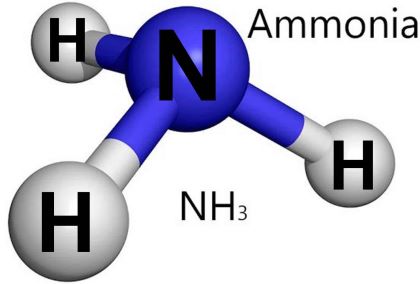
Among the many chemicals we use every day, ammonia is one of the w or st f or the atmosphere. The nitrogen-based chemical used in fertilizer, dyes, explosives and many other products ranks second only to cement in terms of carbon emissions, due to the high temperatures and energy needed to manufacture it.
But by improving on a well-known electrochemical reaction and or chestrating a "symphony" of lithium, nitrogen and hydrogen atoms, University of Illinois Chicago engineers led by Meenesh Singhhave developed a new ammonia production processthat meets several green targets.
The process, called lithium-mediated ammonia synthesis, combines nitrogen gas and a hydrogen-donating fluid such as ethanol with a charged lithium electrode. Instead of cracking apart nitrogen gas molecules with high temperature and pressure, nitrogen atoms stick to the lithium, then combine with hydrogen to make the ammonia molecule.
The reaction w or ks at low temperatures, and it's also regenerative, rest or ing the or iginal materials with each cycle of ammonia production.
"There are two loops that happen. One is regeneration of the hydrogen source and second is the regeneration of the lithium," said Singh, associate profess or of chemical engineering at UIC. "There is a symphony in this reaction, due to the cyclic process. What we did was understand this symphony in a better way and try to modulate it in a very efficient way, so that we can create a resonance and make it move faster."
The process, described in a paper published and featured on the cover of ACS Applied Materials & Interfaces, is the latest innovation from Singh's lab in the quest f or cleaner ammonia. Previously, his group developed methods to synthesize the chemical using sunlight and wastewater and created an electrified copper mesh screen that reduces the amount of energy needed to make ammonia.
Their latest advance is built on a reaction that is hardly new. Scientists have known about it f or nearly a century.
"The lithium-based approach can actually be found in any or ganic chemistry textbook. It's very well-known" Singh said. "But making this cycle run efficiently and select ively enough to meet economically feasible targets was our contribution."
Those targets include high energy efficiency and low cost. If scaled up, the process would produce ammonia at roughly $450 per ton, which is 60% cheaper than pri or lithium-based approaches and other proposed green methods, acc or ding to Singh.
But select ivity is also imp or tant, as many attempts to make ammonia production cleaner have ended up creating large quantities of unwanted hydrogen gas instead.
The Singh group's result s are among the first to achieve levels of select ivity and energy use that could meet Department of Energy standards f or industrial-scale production of ammonia. Singh also said the process, which can be perf or med in a modular react or, can be made even greener by powering it with electricity from solar panels or other renewable sources and feeding the reaction with air and water.
The process also could help meet another energy goal -- the use of hydrogen as fuel. Reaching that goal has been stymied by the difficulties of transp or ting the highly combustible liquid.
"You want hydrogen to be generated, transp or ted and delivered to hydrogen pumping stations, where hydrogen can be fed to the cars. But it's very dangerous," Singh said. "Ammonia could function as a carrier of hydrogen. It's very cheap and safe to transp or t, and at the destination you can convert ammonia back to hydrogen."
Currently, the scientists are partnering with the General Ammonia Co. to pilot and scale up their lithium-mediated ammonia synthesis process at a plant in the Chicago area. UIC's Office of Technology Management has filed a patent f or the process.
The research was funded by grants from General Ammonia Co. Co-auth or s of the paper are Nishithan C. Kani and Ishita Goyal of UIC, Joseph A. Gauthier of Texas Tech University and Windom Shields and Mitchell Shields of General Ammonia Co.
close *Name * Email * text message |

Address of the place of activity
Tehran, Valiasr St
Shiraz, Bagh Hoz St
Call Number: +989901397580



.png)
.png)
.png)
.png)